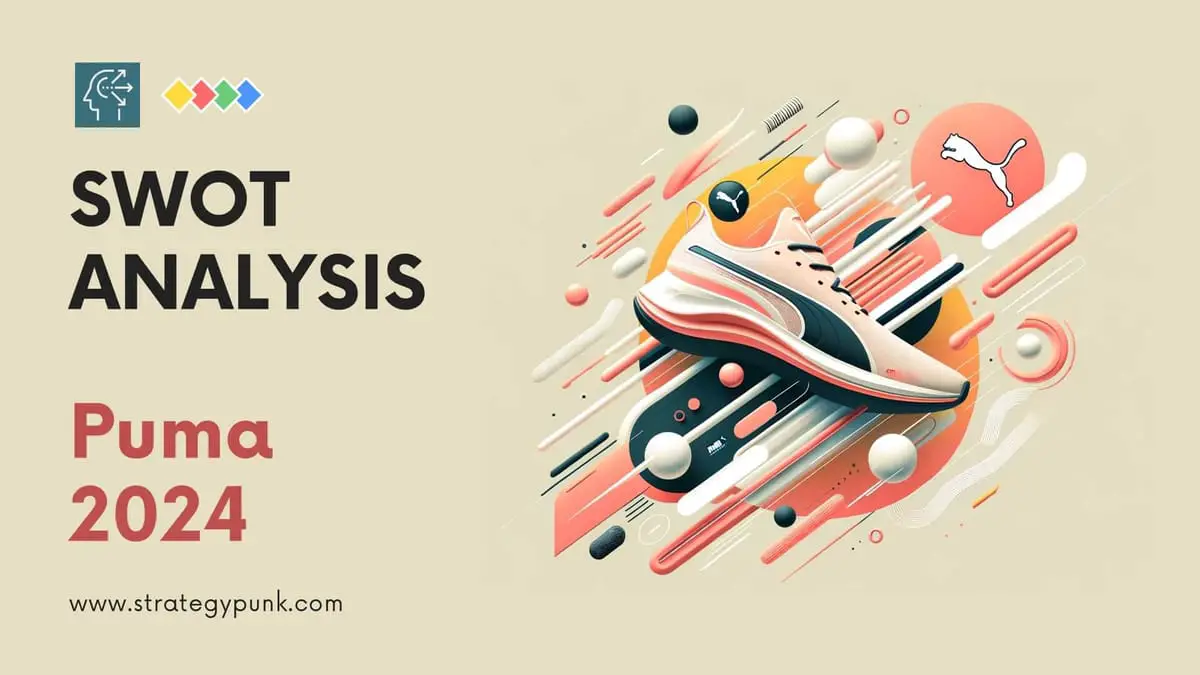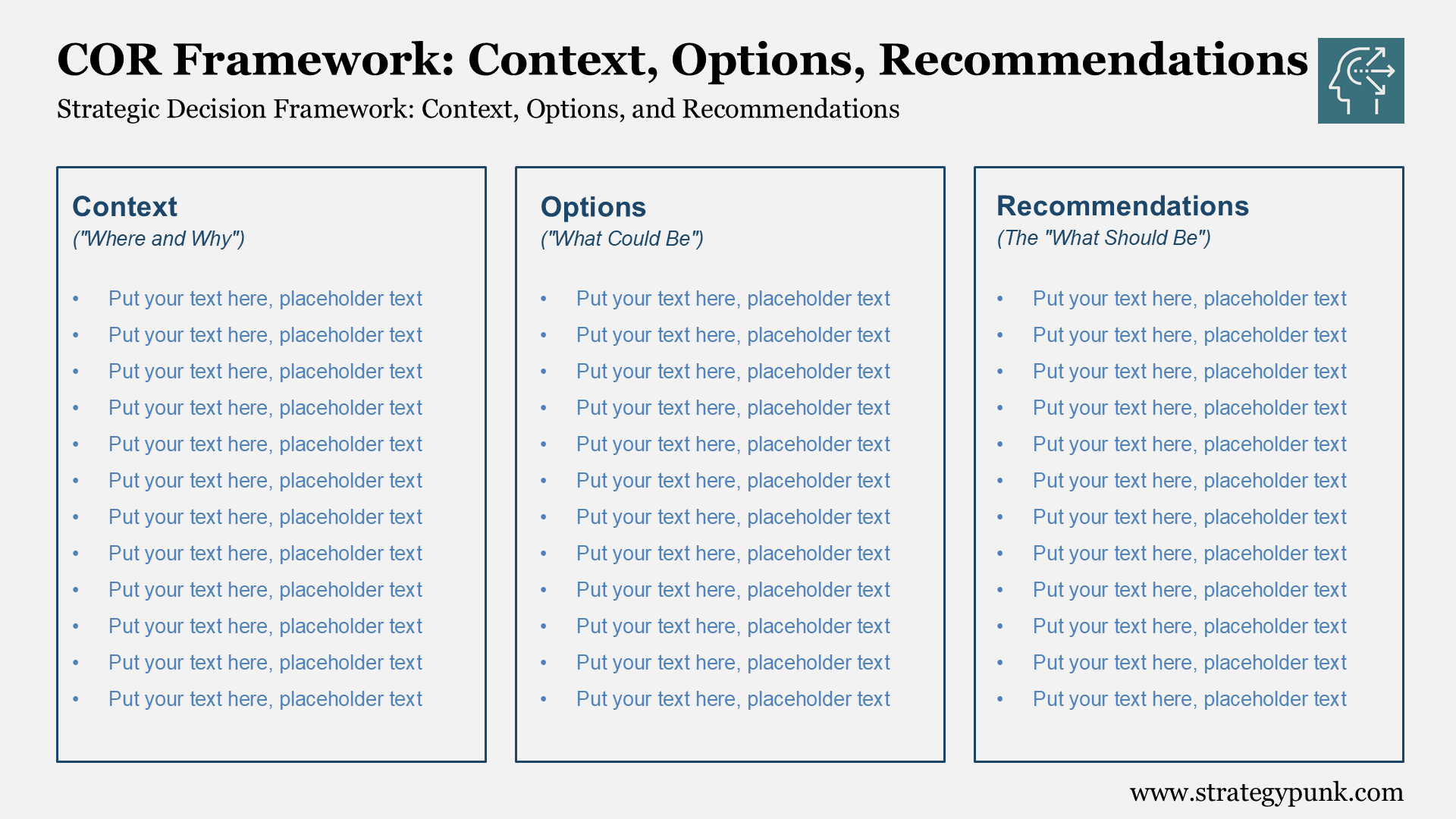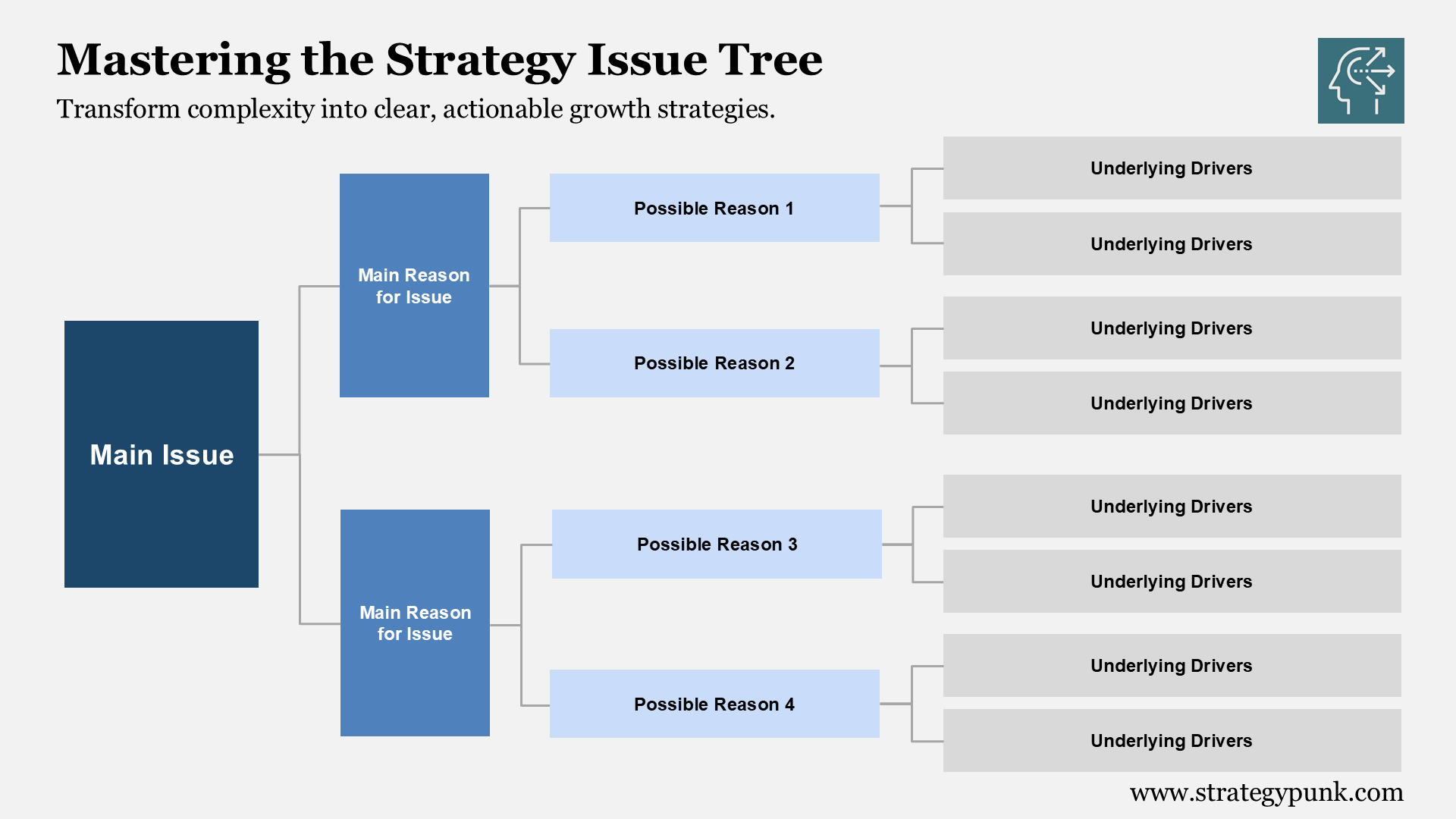Strategic Insights 2024: A SWOT Analysis of Puma
Get your free PPT template for a detailed SWOT Analysis of Puma with Strategic Insights 2024. Unlock insights & strategies now!

Puma is a leading sportswear brand known for its athletic shoes and apparel.
But in an increasingly competitive market, how can Puma maintain its edge?
This blog post will provide strategic insights into Puma's current position by conducting an in-depth SWOT analysis. By examining Puma's strengths, weaknesses, opportunities, and threats, you'll understand where the company stands in 2024 and how it can leverage its advantages to thrive.
We've created a free downloadable PDF and PowerPoint presentation to accompany this SWOT analysis.
You can use these valuable resources to formulate data-driven strategic recommendations for Puma's future growth.
Are you intrigued to unlock these exclusive templates and read the complete analysis?
Then, I'd like you to continue reading to explore Puma's internal capabilities and external environment. You'll discover critical findings on the company's financial performance, brand image, supply chain operations, emerging technologies, and more.
Introduction
The year is 2024, and the sports apparel industry is as competitive as ever. Brands fight tooth and nail for market share, leveraging cutting-edge marketing tactics and celebrity endorsements to capture the hearts and minds of athletes worldwide. Yet one brand stands poised to leap ahead of the pack - Puma.
Founded in 1948 by Rudolf Dassler, Puma has clawed its way to prominence on the global stage through bold design, innovative products, and a commitment to performance. However, the sleek feline faces fierce rivals and emerging challenges in a rapidly evolving landscape.
To analyze Puma's prospects in 2024, we must examine its strengths, weaknesses, opportunities, and threats. This SWOT analysis provides vital insights into Puma's current and potential position.
A Brief History of Puma
Puma began as a small shoe factory in Herzogenaurach, Germany. Rudolf Dassler partnered initially with his brother Adolf to form the Dassler Brothers Shoe Factory. However, tensions rose between the siblings, ultimately driving Rudolf to split in 1948 to create his company, Puma Schuhfabrik Rudolf Dassler.
Early on, Puma established itself through crucial partnerships. At the 1952 Summer Olympics, Puma sponsored German track athlete Heinz Fütterer, who took home a bronze medal wearing Puma shoes. This marked Puma's first step onto the global athletic stage.
Over the following decades, Puma continued expanding internationally, sponsoring legendary athletes like Brazilian soccer superstar Pelé and Jamaican sprinter Usain Bolt. These high-profile sponsorships cemented Puma's image as a serious performance brand for athletes.
Today, Puma remains rooted in sports but has embraced fashion and lifestyle to become the world’s third-largest sportswear manufacturer. It’s poised for continued growth in 2024 through strategic partnerships, celebrity collaborations, and geographic expansion.
Financials of Puma 2023
Puma delivered solid financial results in 2023.
Here's a summary of the key financial figures:
- Sales: €8.6 billion, reflecting a 6.6% currency-adjusted growth year-over-year. Puma
- Footwear Sales Growth: 11.3% increase.Puma
- Apparel Sales Growth: 3.4% increase.Puma
- Regional Performance:
- Operating Profit (EBIT): €622 million, a slight decrease from €641 million in 2022. Puma
Despite high inflation and consumer uncertainty, Puma maintained strong financial performance in 2023, achieving record sales and demonstrating resilience in a volatile market environment.
You can refer to Puma's 2023 Annual Report for a comprehensive overview. Puma Annual Report.
In-Depth SWOT Analysis of Puma 2024

Let’s examine the key factors impacting Puma’s future growth through a SWOT framework:
Puma’s Strengths
- Iconic brand identity tied to sports performance
- Innovative product designs and technologies
- Global production and distribution infrastructure
- Strong financial position and profitability
- Strategic partnerships and sponsorships
Puma’s Weaknesses
- Smaller scale than leading rivals Nike and Adidas
- Limited presence in crucial US market
- Dependence on independent manufacturers
- Fluctuating profit margins
Puma's Opportunities
- Growing middle-class populations in emerging markets
- Expansion of e-commerce and digital marketing
- Increasing demand for athleisure/lifestyle apparel
- Focus on sustainable manufacturing
Puma’s Threats
- Intensifying competition for market share
- Political and economic uncertainty
- Rising production costs and inflation
- Counterfeiting of products
Puma SWOT Analysis Summary 2024

Puma possesses strong brand momentum but faces an increasingly dynamic competitive landscape in 2024. To achieve continued growth, It must harness its innovative ethos to create differentiated products that resonate on the field, on track, and on the streets.
Expanding deeper into high-potential markets like North America and China presents a significant opportunity to unlock untapped demand. Investing in digital capabilities and direct-to-consumer channels will allow Puma to build deeper consumer connections.
However, the brand must contend with aggressive larger rivals, such as Nike and Adidas, vying for market dominance. Puma must be judicious in choosing sponsorships and partnerships that align with its performance-driven identity. Additionally, the company must closely monitor production costs and leverage its supply chain expertise to offset margin pressures.
Puma can pounce on emerging opportunities and evolve into an undisputed leader in the global sportswear industry by playing to its strengths in product design, distribution, and marketing while addressing critical gaps. The stage is set for this nimble challenger brand to establish itself as the top cat in 2024 and beyond.
Internal Factors
Puma’s internal strengths are product innovation, global infrastructure, and robust financial health. Decades of R&D have enabled Puma to develop proprietary technologies like its NETFIT customizable lacing system and NOMI intelligent coaching apparel. These unique performance products and Puma’s iconic style create a compelling value proposition.
Additionally, Puma’s worldwide production and established distribution networks fuel regional growth. The company owns over 13,500 retail stores and shop-in-shops globally and distributes to wholesale customers in 120 countries. This broad reach ensures thatPuma’s products are accessible to consumers worldwide, in-store and online.
From a financial perspective, Puma has delivered consistent profitable growth, with 2023 sales topping €8.6 billion and profits reaching €622 million. These robust earnings have funded expansion, enabling branding, sustainability, and digitalization investments. With strong finances and disciplined cost management, Puma enjoys the stability to navigate challenging conditions.
However, Puma has room for improvement, expanding its market share and profit margins. The brand trails Nike and Adidas considerably in size and scale. Building deeper roots in the crucial US market presents an untapped significant growth opportunity. Puma must also continue diversifying from its wholesale dependence to direct channels. This will provide more control over the consumer experience while improving margins over time.
External Factors
Puma faces a highly dynamic environment filled with both opportunities and threats. Emerging markets across Asia, Africa, and Latin America represent the most significant growth as rising incomes spur demand for activewear and sporting goods. Puma’s early investments in establishing operations across these regions position itself to capture this growth.
Additionally, accelerating shifts towards digital commerce and marketing allow Puma to connect with younger demographics. The company is leaning into e-commerce and social/mobile channels to drive discovery and purchase. Integrating innovations like livestream shopping and augmented reality will help Puma gain market share through digital-first consumers.
However, the external climate also poses challenges for Puma in 2024. Intensifying competition remains an ever-present threat as major players and smaller disruptors vie for consumer wallet share. Navigating supply chain bottlenecks, production costs, and inflationary pressures will test Puma’s operational agility. Above all, economic volatility and uncertainty in major markets could hamper growth if conditions worsen.
By leveraging external opportunities while mitigating critical threats, Puma can thrive in an unpredictable world. To respond to any rapidly arising challenges, Puma must continue exhibiting the “Forever Faster” ethos embedded in its brand DNA.
Frequently Asked Questions
What is Puma’s market position compared to that of its rivals?
Puma is the third largest sportswear company globally, holding around 10% of the market share. This trails significantly behind leaders Nike (~30% share) and Adidas (~20% share) but places it ahead of other significant players like Under Armour and Asics.
What regions show the most growth potential for Puma?
Emerging regions like Asia-Pacific, Latin America, and Africa represent Puma’s most significant growth opportunity in the coming years. Expanding middle-class populations and rising health/fitness awareness will drive demand for sporting goods.
What consumer demographics does Puma target?
Given its sports heritage, Puma maintains a strong foothold with performance athletes. However, the brand has expanded significantly into lifestyle and fashion to capture casual wear consumers. Puma now targets younger demographics focused on style and streetwear.
How will sustainability impact Puma’s business?
As stakeholders demand ethical and eco-friendly business practices, sustainability will significantly impact Puma’s operations and branding. The company has launched aggressive targets to use 100% recycled polyester and achieve complete carbon neutrality by 2025. Puma’s commitments to sustainability will help attract environmentally-conscious Gen Z and millennial consumers.
What is Puma's go-to-market strategy?
Puma employs a multi-channel go-to-market strategy focused on wholesale, direct-to-consumer, and e-commerce channels. Flagship stores and shop-in-shops showcase products, while e-commerce and social commerce drive discovery and purchase. Strategic wholesale partnerships expand Puma's reach globally.
What is Puma's brand strategy?
Performance and style define Puma’s brand strategy. Iconic products like the Suede shoe connect to sports heritage, while recent fashion collaborations with celebrities expand appeal. "Forever Faster" summarizes Puma’s innovative ethos and drive to improve.
Is Puma pursuing mergers or acquisitions?
In recent years, Puma acquired smaller brands like Cobra Golf and Tretornto to diversify its product portfolio. However, significant mergers seem unlikely as Puma focuses on organic growth. Potential future acquisitions could bolster apparel and accessories outside performance categories.
How is Puma evolving its sustainability commitments?
Puma aims to use 75% recycled polyester in 75% of its products by 2025. The company also pursues renewable energy in offices and stores while reducing packaging waste. These initiatives help Puma minimize its environmental impact as stakeholders demand sustainability.
What marketing channels does Puma leverage most?
In addition to traditional media, Puma activates sponsorships of athletes, teams, and events to drive awareness. The brand also engages consumers on digital platforms through social media and livestreaming campaigns featuring influencers and ambassadors.
Puma SWOT Analysis PowerPoint Template
free and fully editable PPT template
A SWOT analysis evaluates the strengths, weaknesses, opportunities, and threats impacting a company.
This free editable PowerPoint template provides a SWOT analysis framework to evaluate Puma's internal strengths and weaknesses and external opportunities and threats.
Puma SWOT Analysis PDF Template
Puma SWOT Analysis PowerPoint Template
Feel free to customize the template by adding your content, images, and visuals.
Discover more
New! SWOT Framework & Free PPT Template - 2024 Edition
Dive into the 2024 Edition of our SWOT Analysis guide, complete with a free PowerPoint template. This resource covers the essentials of conducting a SWOT analysis, its benefits, and practical application tips, including a case study on Mercedes Benz.

Strategic Insights 2024: A SWOT Analysis of adidas (Free PPT)
Explore 'Strategic Insights 2024: A SWOT Analysis of adidas' with our free PowerPoint template. Dive deep into adidas' strengths, weaknesses, opportunities, and threats in 2024. Download now for insightful strategy planning!

Nike in 2024: Detailed SWOT Analysis with a Complimentary PowerPoint Template
Download Nike's 2024 SWOT Analysis: Comprehensive insights and free PowerPoint template. Key strategies, opportunities, and challenges revealed.







